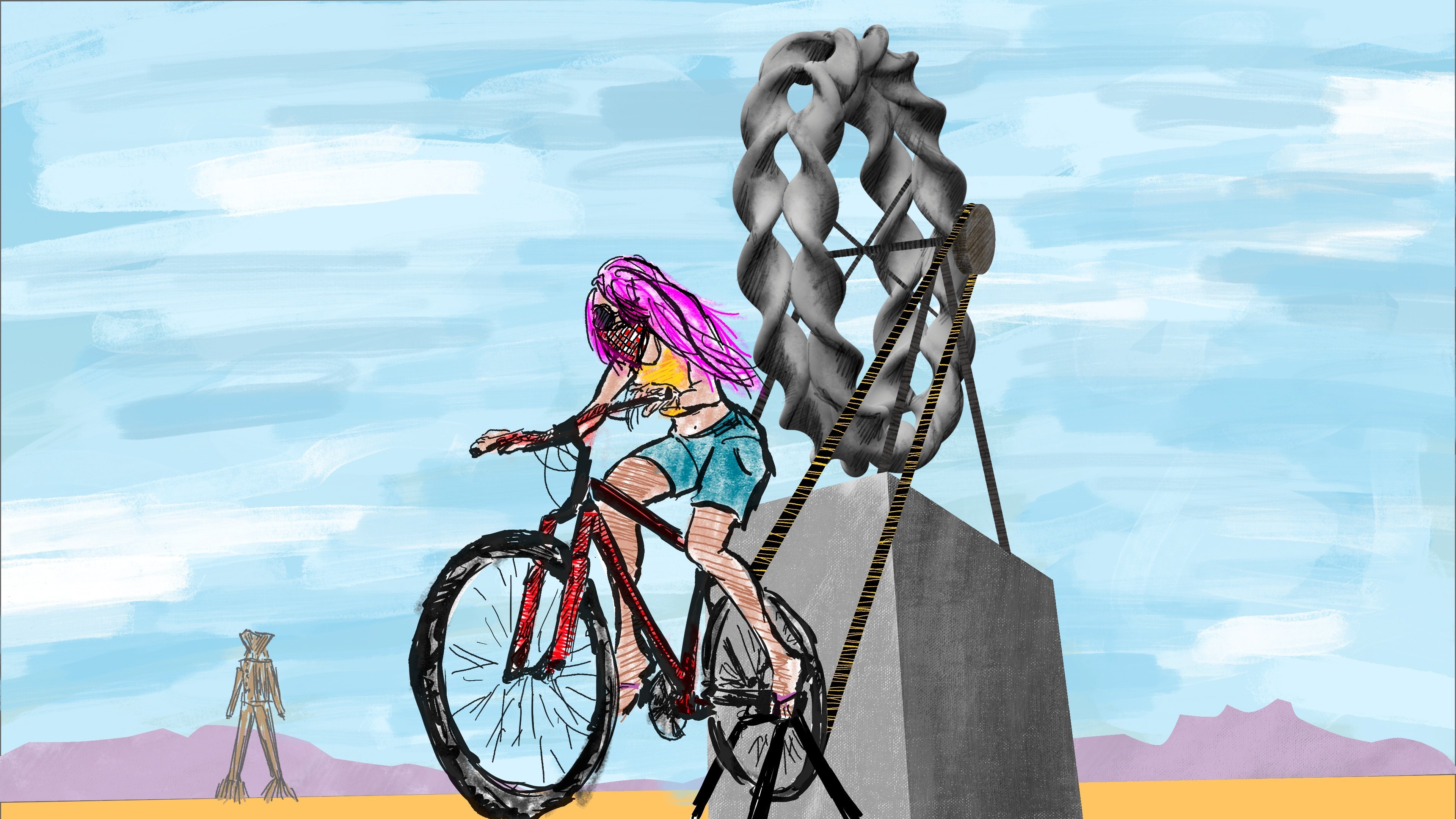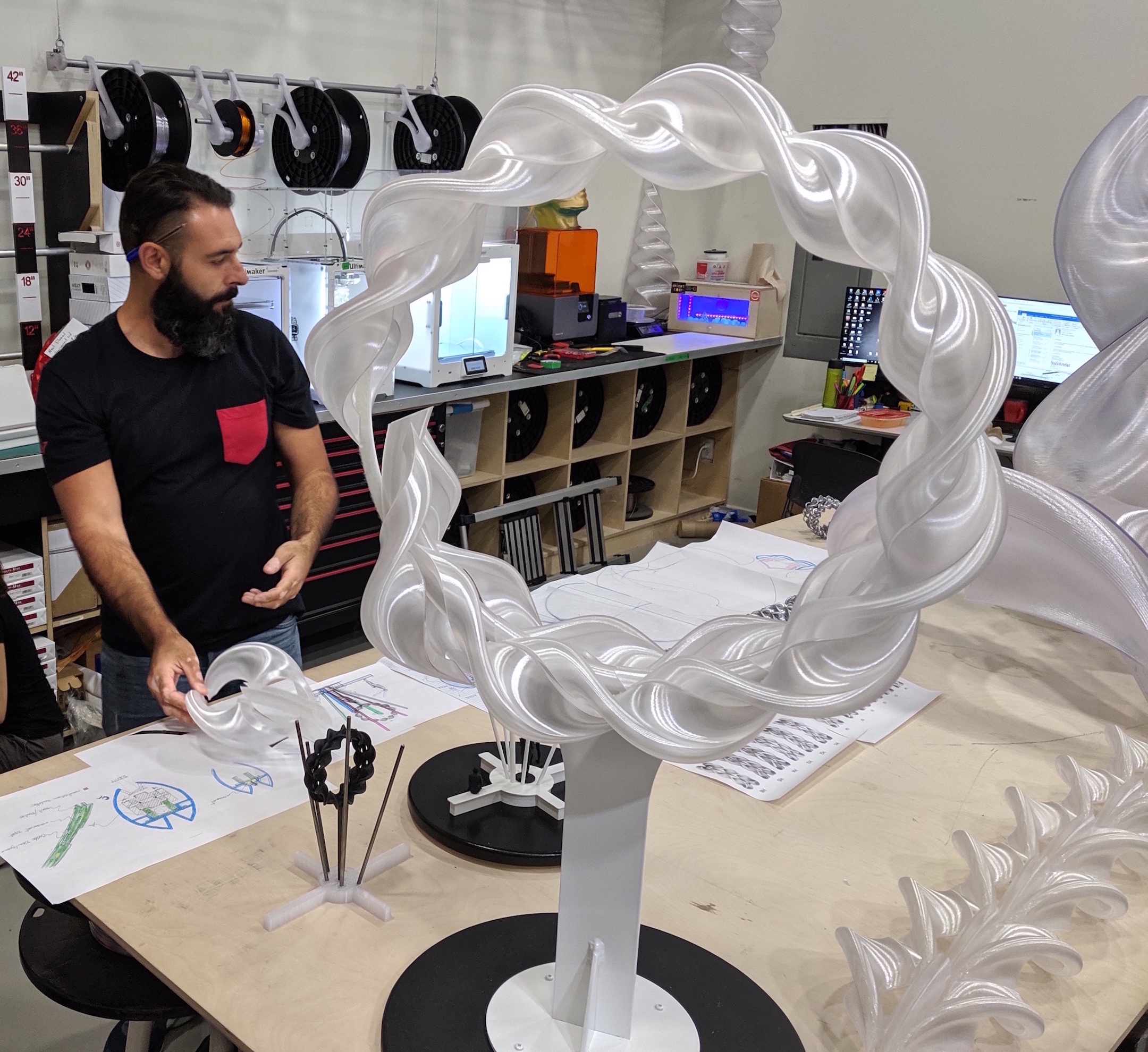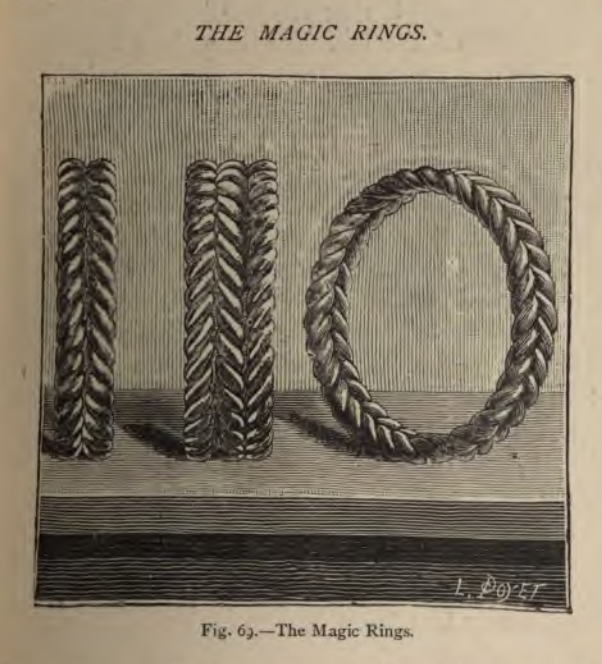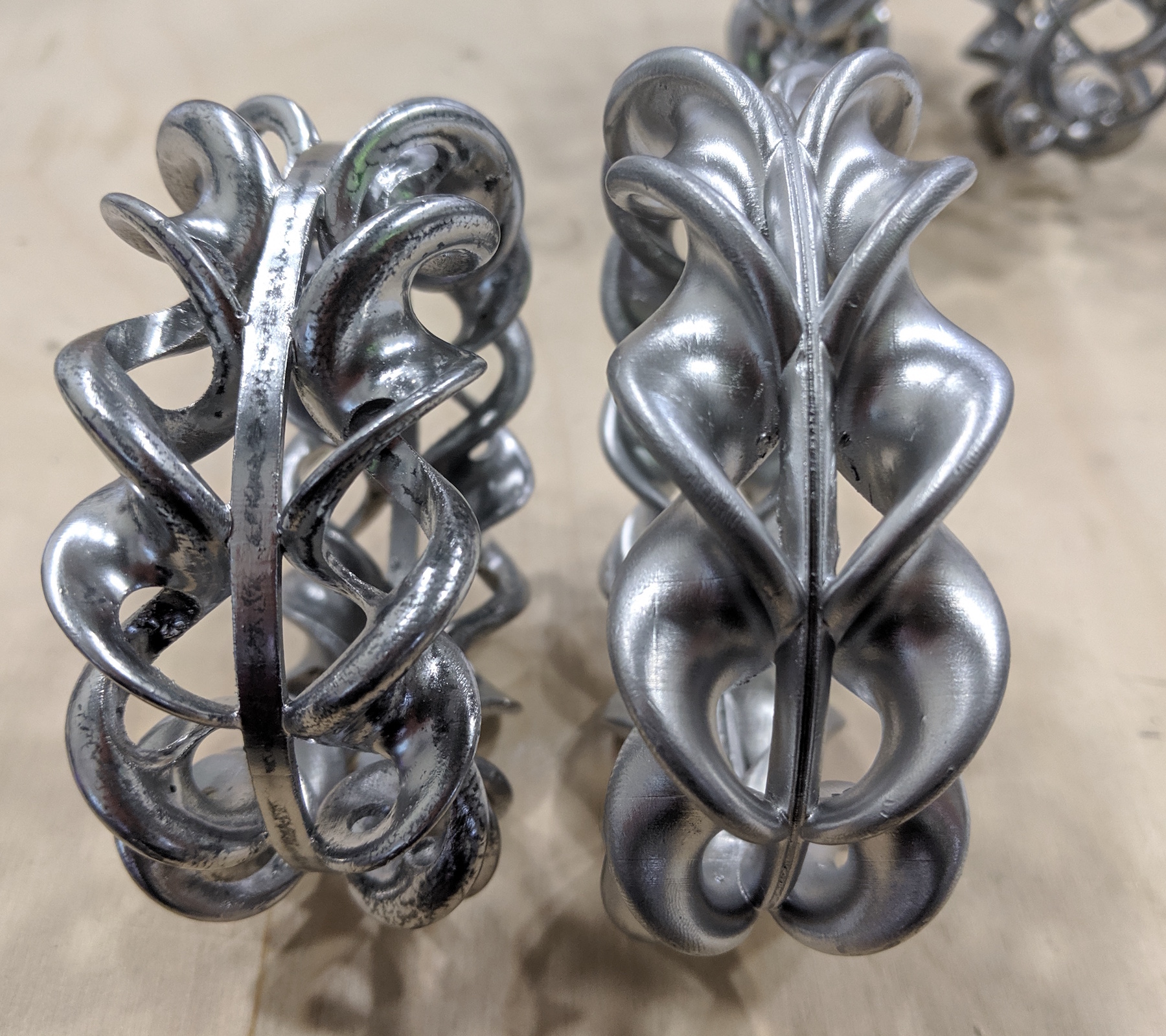
As lead artist of Fascination, I am delighted to announce that this interactive illusion installation will be one of the 71 Black Rock City Arts Honoraria projects at Burning Man this year. This post introduces the international team bringing this art to the playa from Montreal, provides some behind-the-scenes information, and lists ways in which you can get involved. The project took shape in my mind when I imagined creating a large optical illusion wheel and using it as a Cyr Wheel or a German Wheel. It became more of a reality when my grant application to the BLC Arts Honoraria program was successful and when Nextasy, the innovation lab of Cirque du Soleil, CRITAC, the research centre at Montreal’s National Circus School, and Concordia University decided to support it.
Description
“Fascination” is defined by the OED as either the “casting of a spell; sorcery, enchantment,” or “the state of being under a spell.” Magic and optical illusions require interaction from spectators to exist. Fascination gives wanderers of the playa the opportunity to engage with it passively (by watching its magic effect from afar) or actively (by using their own muscles to power the illusion for others). Some may choose to try out both modes of engagement thereby switching between the roles of the magician (the illusion-maker or the fascinator) and the spectator (the perceiver or the one fascinated).
Team
We are a team of Canadian, French and American artists, creators, engineers, craftspeople, and project managers bringing this interactive art installation to the playa this year. Five of us — Joe Culpepper, Marion Cossin, Louis-Philippe Dugré-Thibaudeau, Guillaume Jacques and Andrew Miller — will be traveling all the way from Montreal to meet up with Red Ryan, Steve Johnson and our project liaison, Katie Hazard. Gabrielle Pauzé and Angela Giunta will remain in Montreal to hold down the fort, but their hard work and thoughtfulness continue to play a huge role in making Fascination possible. We are also grateful to be camping with Ludus Symposium. We would also like to give special thanks to Patrice Aubertin, Phil Aubertin, Patrick Chassin, Danielle Clermont, Rino Côté, Marie-Josée Doyon, Marie-Eve Ferron, Line Giasson, Frank Helpin, Guillaume Jacques, Fay Anais Jutras, Richard LePage, Louis Patrick Leroux, Nathan Livni, Charlie Maréchal, Marie-Hélène Martineau, Maïté Martinez, Hugues Monfroy, Bernard Petiot, Diane Quinn, Jim Steinmeyer, Éric Tendi, Jean Thibault and Boris Verkhovsky.
Process
Inspired by the history of optical illusion rings and interactive kinetic art sculptures by artists like Anthony Howe, I proposed a large-scale art installation for Burning Man that will be activated and powered by participants. The fascination wheel will be suspended ten feet above the ground and will be roughly seven feet in diameter and three feet wide. Our team has put a lot of time and thought into making the design of the structure that holds and rotates the fascination wheel as streamlined and efficient as possible. The following model (with one of it’s sections in Louis-Philippe’s right hand) captures the basic structure at a smaller scale:

The earliest record of the this core illusion (that I currently know of) is from Michel de Montaigne’s 16th-century description of rings of heraldry during the French Renaissance. Here is a modern English translation of the relevant passage from one of his Essais as translated by Charles Cotton (1685) and revised by William Hazlitt (1842):
“Those rings which are cut in the form of feathers, which are called endless feathers, no eye can discern their size, or can keep itself from the deception that on one side they enlarge, and on the other contract, and come to a point, even when the ring is being turned round the finger; yet, when you feel them, they seem all of an equal size” (280).
One of the most interesting visual records of this optical ring illusion appears a few centuries later during the Second Industrial Revolution when a rise in psychological studies of optical illusions and the production of optical toys occurs:

This illustration by L. Poyet is included in an English translation of a book by Gaston Tissandier titled Half Hours of Scientific Amusement Or Practical Physics and Chemistry without Apparatus (published in 1890). Notice the unusual three-band version of the second ring in-between the standard rings on the left and right pictured above. It is also worth noting the line that travels down the centre of the asynchronous “v” shapes that serve as the building blocks of these illusion rings.
Sometime in the early 2000s, an updated design of these optical illusion finger rings became available on the retail magic market. I believe that Rob Stiff of Magic Makers is responsible for improving and bringing them back into style. These commercially available novelty items have larger gaps within the same basic “v” structure, which increases the visibility of the illusion.
To create Fascination, we resculpted and remixed elements of all of these designs to adapt this optical illusion to meet the requirements of a much larger scale of kinetic art. The most unobtrusive turning mechanism requires bringing the central line back into the illusion. To do this elegantly, the contemporary “v” design was resculpted to blend this central line into the optical illusion (see the miniature model on the right-hand side of the following photo)

The arms of the v shapes on the right traverse into the centerline of the wheel model on the right compared to another design visible on the left-hand side of this photo.
This centerline is crucial for mounting the twelve sections of the optical illusion wheel (it must disassemble to meet international transportation and construction needs). Here is what two of the sections look like when joined together:
The line also traces out and hides the circular track upon which the Fascination wheel rotates:
The full wheel is currently being mounted for testing at an indoor studio. We’ll be bombarding Fascination with baby powder to simulate what burners call “playa dust” — the fine particulate matter that permeates everything at Burning Man. Any necessary corrections will be made during these tests before we disassemble it and ship it to Black Rock City in August. And this is where you come in!
Participate
Whether you will be going to Burning Man 2019 or not, here are some ways that you could help us out. It’s an enormous undertaking to bring art to Burning Man from another country and even with the help of a grant, we are still working on the following items. Many of these are simply an international transportation issue:
-
- Volunteer — Contact Joe to sign up for a shift! Fascination is looking for friends to help participants interact with the illusion during Burning Man.
Please email joe.culpepper@gmail.com if you have any leads on these items or other questions about Fascination.
One Comment
Estou gostando dos seus artigos, eu acompanho Seu website a algum
tempo, Parabéns pela iniciativa de falar sobre este tema conteúdo de qualidade.
Coloquei esse site nos meus favoritos. Obrigado! 🙂